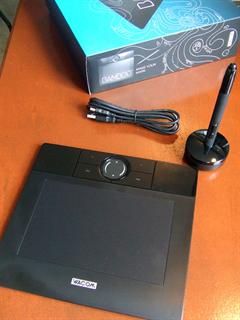Flipping Your Classroom With Free Web Tools - Guest Post

Flipping Your Classroom With Free Web Tools - Guest Post
The Flipped Classroom is gaining steam in schools across the world. Flipped classes focus on student interaction and engagement in class and a major component is the technology that can be used to create, deliver, and collaborate. Richard has posted on many of these tools, so I’ll be sharing how I use a combination of tools in a typical unit.
Writing
GoogleDocs has been a lifesaver for me. I’m always moving between machines, so I rarely store data locally. All of my written material is done with Google. I use Docs and Presentations to create and share the content with students. I also use GoogleDocs for students to write collaborative lab reports or research presentations to cut down on paper used in class. Last year, my AP Chemistry class wrote and edited a lab manual using only GoogleDocs.
Recording
A Flipped Classroom uses screencasting or podcasting to deliver direct instruction when appropriate. After I’ve decided what to record, I write up some notes and then make a video. There are tools available for purchase, but when money is short, there are plenty of free options available on the web. While you can record for free, many have a time limit, which is a good thing. The best videos are less than 10 minutes long.
Screencast-o-matic and Screenr are probably the best two web apps available. Screencast-o-matic has a Pro account that will host your files, while a normal Screenr account will do the same. Educreations is another, newer screen recording site that gives you a blank canvas in a browser window. You can annotate and record in one place for free. All give an option to download the videos.
Jing is a free download and runs locally on your machine rather than as a web app. With your account, TechSmith hosts all your videos on screencast.com. With YouTube blocked in many districts, this is a good alternative.
| For Inspiration Only, Flickr CC |
Annotating
Typically, screencasts are composed of a PowerPoint or PDF file being annotated and narrated by the teacher as they would in class. If your school is already equipped with Promethean or SMART products, you can record and annotate using their software. If you don’t, I would recommend searching on Craigslist or eBay for a used pen tablet, similar to the ones produced by Wacom. They usually retail for $80 - $100, but I found mine on Craigslist for $30. Many teachers don’t annotate, and simply record a presentation, so a tablet isn’t vital.
To annotate a PDF for a recording, I use a program called Jarnal. It is a free download running through Java on your machine that allows you to write on top of PDF files. You can then save and export an annotated PDF for archive, printing, or sharing to the web. FormulatePro is similar to Jarnal, but runs as a standalone application on your computer.
Sharing
After everything is recorded, I share my content. I use Wordpress to run my class website. Others use GoogleSites or Moodle through their school. The important thing is to use what you already have to distribute content. A web space is important because it allows for 24/7 access by students.
Student creation is another very important part of a flipped class. Students make their own podcasts, create presentations, or even make websites with what they’ve learned. They can then share their work with people around the world. Ownership and relevance are accentuated and engagement rises. The appropriate use of technology in a flipped classroom is much more powerful than the technology alone.
About the Guest Blogger
Brian E. Bennett is a science teacher living in Evansville, IN. He uses a Flipped Classroom with biology and chemistry students to expand their technology skills and to build global connections. He currently blogs on Educator, Learner about science, technology, education policy, and teaching. You can catch him on Twitter, @bennettscience or on Google+.


